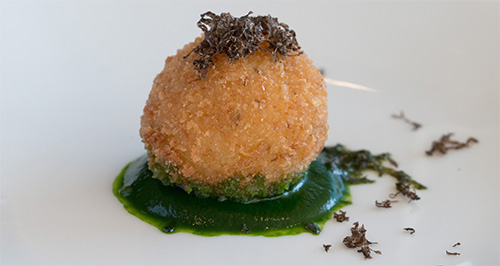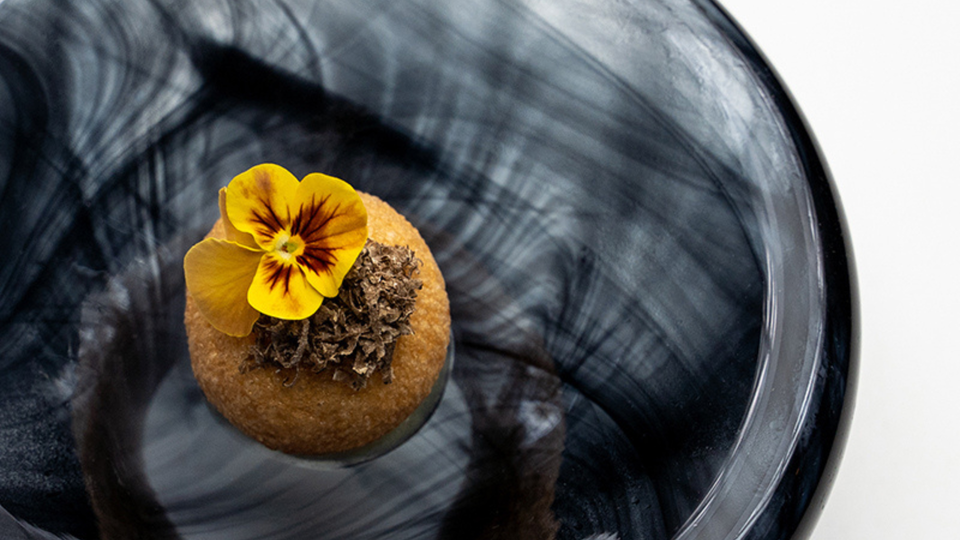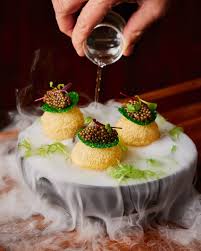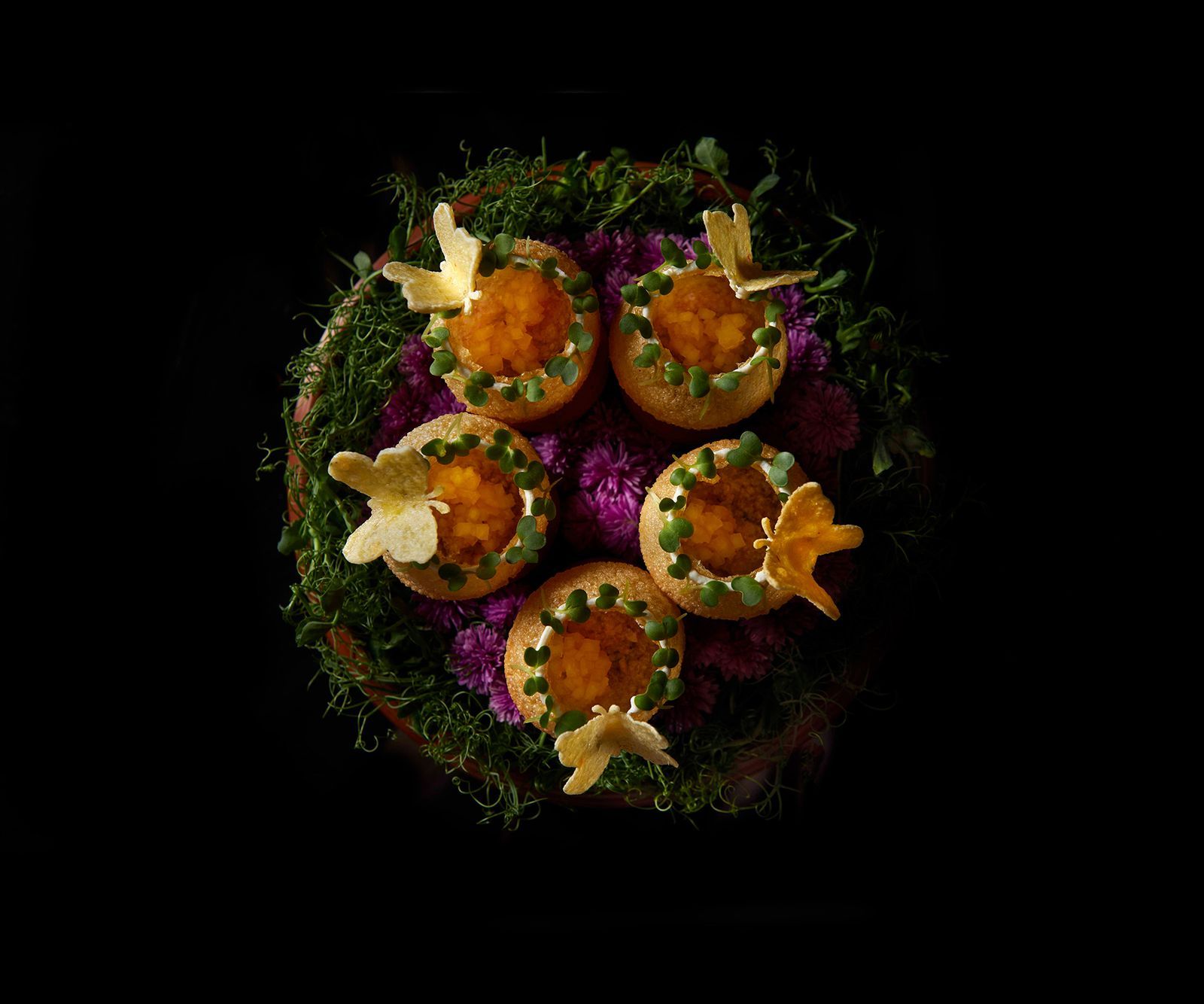From the street to Michelin stars - first recipe
- rosemary
- Oct 17
- 6 min read
"there is no such thing as ‘traditional, authentic cuisine’ anywhere. It’s constantly evolving." Thitid “Ton” Tassanakajohn - Michelin star chef Bangkok

Before I return yesterday's book to a shelf somewhere I thought I should do a first recipe thing on it, as it will be placed on a shelf that has already been given the first recipe treatment.
I also decided retrospectively, having researched a bit, to cover two different dishes here - the first and third recipes in the book. I had actually chosen the third recipe rather than the first, but as I 'researched' realised that there were similarities between them both, in that they were both fancy versions of things that were either sold on the street or made in the home kitchen from leftovers. So let's begin with the first - Red Thai arancini the recipe for which can be found on the Food and Travel Magazine website.
We all know and probably love arancini. It's on every Italian restaurant menu. You may even have made some yourself because it's pretty easy - just leftover risotto, crumbed and deep-fried to crunchy perfection. What's not to love and how satisfying to use up that little bit of leftover risotto.
Nisha Parmar' too - as her recipe she says, is inspired by the occasion:
"I once had sticky jasmine rice and Thai curry sauce left over, and stored in a container overnight they congealed together, taking on the the characteristics of leftover risotto"
That's not what you see in the photograph however, because "over time I have tweaked the recipe to achieve the perfect texture, and the heady taste of lemongrass and lime-leaf". So much so that the recipe looks a bit complicated - well the ingredient list is long, and you obviously make the rice and sauce mix that is the fundamental form. This is not one of her cheating recipes which in some ways is ironic considering the simplicity of the original dish.
She is not alone however. Michelin Star chefs all over the world have had a go at this homely Italian dish, which perhaps is not that surprising because Italian cuisine, as we know has spread around the world. Below are some MIchelin examples - expensive ingredients like truffles, a very fancy presentation, or a fusion of local with Italian - as the first one here - which is a Kedgeree arancini from a British Michelin starred restaurant in Gloucestershire, the rest are from Sicily - arancini's home, but not in these Michelin starred places:

Nisha Para's other similar transformation is what she calls Bombay beetroot bubble - her interpretation of the much loved Indian street food Pani puri - which I shall come to. This was the recipe that was going to be the feature for the first recipe post, mostly I think because I thought this one might be doable. Puri are: "little hollow semolina golf balls ready for a spicy water dunking (pani) or a gentle yoghurt bathing." Well they are not really hollow because you fill them with things like potatoes and chickpeas. Her "accidental concoction came about when I had a packet of beetroot in the fridge and no potatoes." Unlike her fancy arancini this is almost a cheating recipe in that the filling is relatively simple - beetroot, avocado, onion, chickpeas and chaat masala. She also suggests buying the puris ready-made, which might mean that you don't have a go at these, because you haven't got an Indian food store near you - and that goes for the chaat masala too.

However, Madhur Jaffrey with her Dahi puri chaat - on the Master Class website will show you how if you want to have a go. It does look simple - a flour and water dough, rolled out thinly and fried. And there are plenty of other recipes online. But then again, Madhur did say:
"it takes years of practice to make really fine, soft pooris. It is said in Benares that if twenty five pooris were stacked on a plate and a coin dropped on the lot, the sound of the coin hitting the plate should be heard with clarity"
So maybe it's best to find an Indian food shop.

It's India's favourite street food and even the Indians, tend not to make it at home, preferring instead to queue at their favourite stall where the owner knows which of the many choices for inserting into the puris, you prefer. Well that's what they say. It was even implied that you need to know how to eat it:

"eating a pani puri requires much attention and no small amount of skill: poke a hole on the surface of the puri with your forefinger, load it up with your chosen filling – such as mashed potato, healthy sprouts, finely chopped onions or mushy peas – and then dunk the whole thing into sweet-and-sour tamarind and spicy green chutney waters (both often kept iced) in quick succession. Finally, pop the whole package into your mouth and wait for the explosion of flavours, as the puri – ever so slightly soggy by then – crumbles inside your mouth with the sauces flowing out, all while filling the soul and clearing the sinuses at the same time. Charukesi Ramadurai/BBC
Possibly here in Australia at festivals and markets in the right areas you might be able to do the same thing and that BBC article did indeed say that:

“restaurants cannot recreate the thrill of standing on the pavement, unperturbed by people jostling past. Your eyes are focused on the pani puri wala. You have to be ready to pop it in [your mouth] when your turn comes.” Kalyan Karmakar/BBC
Indian food is possibly not as well-known as Italian food globally, but interest in that cuisine is growing and increasingly high-end Indian restaurants are achieving fame. So what do Michelin starred chefs do with puri? Well below a few examples, beginning with a modest upmarket version - just to demonstrate that you can make the basic look good, just by the way you present it. Then we have foie gras, oysters and I'm not sure what the last one is. The last three all Michelin starred and not necessarily from Indian chefs. Indeed many of them, like the arancini seemed to take the fusion approach of using local ingredients and an Indian concept.

And just to prove the point about the increasing popularity of puri Google - in July 2023 - published its first Foodle - a food related doodle - and in this case a game - with pani puri. They chose it because:
“On this day in 2015, in Indore, Madhya Pradesh, a restaurant called Indori Zayka and Dainik Bhaskar achieved the World Record for serving the most flavours of pani puri by offering 51 options, under the guidance of Masterchef Neha Shah,” Google stated.
Given that these two original dishes are definitely cucina povera, it is rather fascinating to see them rise to the top of the foodie tree - well in some people's eyes. Looking at those Michelin pictures you have to say that this is like haute couture - a staple raised to art. Does it taste good? Well alas I shall never know. And should we get all hot under the collar that high-end chefs are experimenting with world cuisines not their own and transforming them into something beautifully and excitingly new? Well I'll give the last word to Michelin starred Thai chef Thitid “Ton” Tassanakajohn in that article by Smitha Menon in the Condé Nast Traveller Magazine:
"While these interpretations of the dish are exciting, they do raise the question of cultural appropriation. How much is too much? Chef Ton provides a refreshing perspective. “I find it so absurd to think of cuisine as static and unchanging. Thai food is a combination of multiple exchanges of culture and trade. As is the case for any cuisine around the world. So if you think about it, there is no such thing as ‘traditional, authentic cuisine’ anywhere. It’s constantly evolving. Who knows, if chef Muñoz is doing pani puri in Spain currently, 100 years from now, people might just be calling it Spanish cuisine,”

This is that chef - Dabiz Muños - a Michelin starred Spanish chef, who, the article says, experiments with pani puri in different ways. I love this picture because it is so over the top - is he experimenting with them by burning them? Maybe they have been doused with some kind of alcohol. He was "crowned the best chef in the world at the Best Chef Awards 2022" and one of his pani puri experiments is "filled with lobster claw and salmorejo, a traditional Andalusian soup of tomato, bread, extra virgin olive oil and garlic."
I wonder what those street sellers in every Indian town would think of that.
YEARS GONE BY
October 17
2023 - Hot sauce - or is it a bath?
2022 - A man well ahead of his time
2020 - Missing
2019 - Feeding the rabbits
2017 - Tea towels
2016 - Quiche
















Not sure I like the idea of street food..... eaten on the prowl. I like to sit down for my food in a nice location with friends and/or family in the mix and a nice glass of wine. Just as we are about to have tonight! 🫠